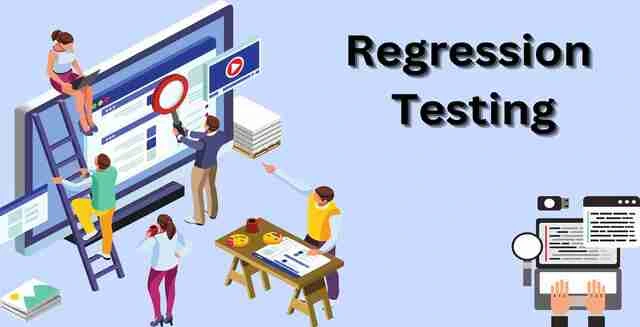In today's fast-paced software development company, preserving software quality is critical. Every update to the codebase, whether adding new features or resolving faults, has the potential to introduce new issues. This is where regression testing in software testing becomes an important discipline. Regression testing is important for maintaining software stable and reliable since it ensures that previously built and tested software continues to function after changes.
In this article, we'll look at regression testing in software testing, why it's important, and how it helps teams build better products. In addition, we will discuss popular methodologies and best practices for incorporating regression software testing into your development process.
What is Regression Testing?
In software testing, regression testing is the process of ensuring that recent changes, such as bug patches or new features, do not have a negative impact on existing functionality. In essence, it is about retesting the software to guarantee that previously working code is not affected by any upgrades. This is a critical step in ensuring the integrity of your program, particularly in agile contexts where changes are frequent.
Without effective regression testing, even minor changes to the code can result in unexpected errors. Whether you're adding new functionality, enhancing performance, or making changes, regression testing serves as a safety net to guarantee that the essential functionality is preserved.
Types of Regression Testing in Software Testing
There are several types of regression testing, each designed to address different aspects of code verification. Let's look at the most common types:
Full Regression Testing:
Full regression testing involves re-testing the entire application. This class is often used when there is a big update or change to the code base. Full regression testing ensures that all areas of the product remain working even after significant changes.
Partial Regression Testing:
Partial regression testing examines only the regions of software affected by recent changes. This approach reduces time compared to thorough regression testing while still ensuring that essential sections of the product function properly.
Unit Regression Testing:
Unit regression testing involves isolating individual software components or modules to ensure proper functionality following changes. It is useful when modifications are limited to certain portions of the application, eliminating the need for more extensive testing efforts.
Each of these approaches has a place in a well-organized regression testing plan. The goal is to select the technique that best matches the scope and type of your software changes.
The Importance of Regression Software Testing
Why is regression software testing so importants of software development? The answer lies in the requirement for consistency and dependability. Any update to the software runs the risk of breaking existing functionality. Regression software testing ensures that your software is reliable and works as intended.
Maintains quality with updates:
Software features and complexity grow over time. Regression testing is critical for maintaining quality and preventing newly discovered defects from disrupting the user experience. It ensures that updates do not impair the essential functionality of your software.
Prevents Business Loss:
Consider the scenario where a critical defect arises in the production environment following an upgrade. This might result in downtime, dissatisfied users, and financial losses. Regression software testing identifies these issues before they reach end users, protecting your company's reputation and avoiding costly mistakes.
Improves Developer Confidence:
Comprehensive software development regression testing ensures developers can make code changes without fear of unforeseen consequences. This increases productivity and allows for more regular changes, helping you remain competitive in the market.
Automation in Regression Testing

Manual regression testing can be time-consuming and error-prone, particularly in bigger applications. Here's where automation comes in. Automated regression testing use technologies to execute repetitive tests on the codebase automatically, saving time and effort required for manual testing.
Automation in regression software testing has various benefits:
Speed and Efficiency:
Automated tests can run much faster than manual tests, resulting in faster feedback and shorter development cycles.
Consistency:
Automated tests are executed in the same manner each time, eliminating human error and assuring consistent results.
Scalability:
As your application expands, maintaining manual test coverage gets more difficult. Automation enables you to grow your testing efforts and handle large apps more efficiently.
Selenium, JUnit, and TestComplete are among the most popular automated regression testing tools. Integrating these technologies into your testing framework allows you to optimize the process while maintaining high-quality standards throughout the software development lifecycle.
Best Practices for Effective Regression Testing
To get the most out of your regression testing efforts, it's important to follow some best practices:
Prioritize test cases:
Based on crucial areas or recent modifications to the application. This guarantees that the most important features are tested first, lowering the likelihood of high-priority issues getting through.
Combine Manual and Automated Testing:
Automation is helpful for repetitive jobs, but manual testing is still necessary for identifying complicated issues. Combining the two methodologies will result in the most extensive test coverage.
Run regression tests frequently:
Run tests after every important code update, bug fix, or feature addition to assure the software's stability.
Use a test environment that is similar to production:
Run your regression tests in a setting that closely resembles your production environment. This minimizes the risk that environment-specific defects may surface in production.
Challenges in Regression Testing and How to Overcome Them
Like any testing process, regression testing comes with its own set of challenges. These include:
Test Case Maintenance:
Maintaining test cases can be challenging as an application develops in size. Regularly evaluate and update test cases to ensure they are still relevant and accurate.
Time Constraints:
Running a comprehensive set of regression tests can be time-consuming, especially in rapid development environments. Prioritize key tests and automate as much as feasible to save testing time.
False Positives/Negatives:
False Positives/Negatives: Automated tests may find bugs wrongly or miss them altogether. To reduce these difficulties, keep your tests updated and fine-tuned on a regular schedule.
Conclusion
Regression testing in software testing is a useful method for ensuring that your product stays dependable even as it changes. Whether you're making tiny changes or completely revamping the system, regression software testing is critical for preserving quality and preventing errors from reaching end users.
By automating regression testing, selecting test cases, and executing tests on a regular basis, you may reduce risks and ensure that your product continues to perform optimally. Accept the power of regression testing and elevate your software development process to the next level.If you want to learn more about best practices in software development, check out our blog for expert insights The Future of Software Development: Opportunities and Growth Forecast for 2030

